The Imperial Strikes Back
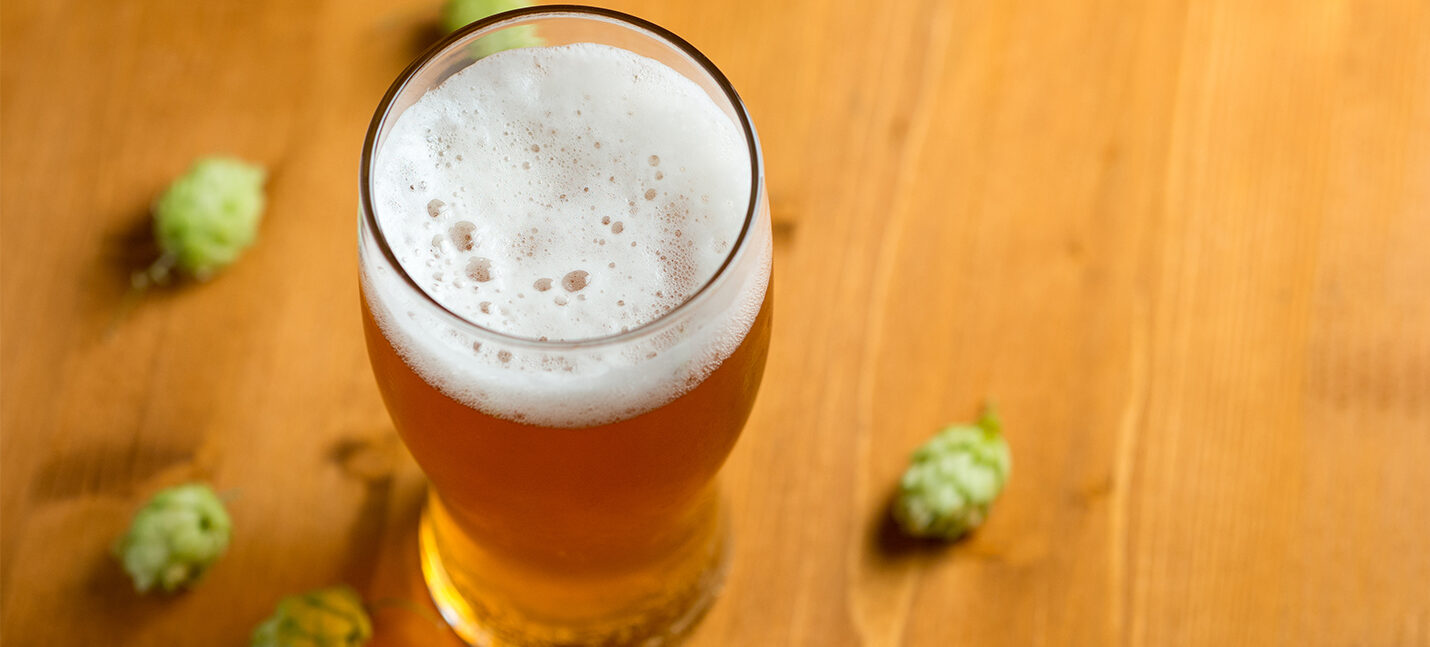
After years of being “sessionized,” IPAs are going big again
The importance of the IPA category to the craft beer market isn’t exactly breaking news, but the resurgence of Imperial IPAs amid low-ABV and health-conscious trends in brewing is noteworthy. According to industry sales data, Imperial IPAs are up almost 20% YTD for 2021 in off-premise sales.
What’s behind the return of big IPAs (and did they ever even leave)? One possible factor is COVID-19. Since high-ABV beer styles tend to sell better in packaging than they do on draft in taprooms and bars, the shift to at-home drinking during the pandemic was only a plus for the biggest brother in the already-popular IPA category.
Pour yourself a big, hoppy beer and settle in with us to explore the nomenclature, history, and ingredients that make these ales tick.
Double IPA or Imperial IPA? What’s the difference?
Short answer? Nothing.
Double IPA and Imperial IPA are in fact the same thing; an IPA that’s been turned up to eleven. Some believe the origin of the name “Double IPA” comes from the extra “I” in the abbreviation of Imperial IPA (IIPA). Imperial on the other hand is a term often used in beer to denote big flavor and high alcohol.
Style origins: Will the real Imperial IPA please stand up?
Although there is some debate, the first Imperial IPA was likely created by Vinnie Cilurzo back in 1994 for the Blind Pig Brewery in Temecula, California.
As the legend goes, Vinnie was attempting to create his first beer for the new brewery. But with limited equipment he needed a way to hide any potential flaws. His solution? Double the hops and malt of his IPA recipe. The result was an exceptionally bitter and flavorful beer, and thus the category was born.
But he didn’t stop there. Vinnie would go on to become the brew master at Russian River Brewing Company and in 1999 developed Pliny the Elder, one of the first commercially available Imperial IPAs and a paragon of the style. With multiple GABF medals, a 100% rating over more than 15,000 reviews on beeradvocate.com, and a seven-year streak at the top of the American Homebrewers’ Association’ annual survey of the best beers in America, Pliny has earned its spot in the IPA pantheon.
Go deeper: Humulus U session with Vinnie Cilurzo on the power of hops
Some classic (and fast-growing) examples:
- 10 Bitter Years, Black Oak Beer Co (ON)
- 90 Minute Imperial, Dogfish Head Craft Brewery
- Abrasive, Surly Brewing Co.
- Big Ballard, Redhook Brewery
- Big Little Thing, Sierra Nevada
- Double Jack, Firestone Walker Brewing Co.
- Fat Tug IPA, Driftwood Beer (BC)
- Faces Double IPA, Wellington Brewery (ON)
- The Forgetful Brewer, Outcast Brewing (Alberta)
- Full Contact Imperial Hazy, Elysian Brewing
- Pliny the Younger, Russian River Brewing Co.
- Rodeo Clown Double IPA, Karbach Brewing Co.
- Royal Fresh Imperial IPA, Deschutes Brewery
- Super Cluster, Lagunitas Brewing Co.
- Voodoo Ranger Imperial IPA, New Belgium Brewing
Hops: more is more!
It’s a common misconception that IPA is an acronym for India Pale Ale – it actually stands for “hops, hops, hops.” Imperial IPAs need imperial amounts of hops – to help differentiate yours, we recommend these rarer varieties to help your beer stand out while still delivering the requisite sensory overload:
Cashmere: Strongly fruity, with overtones of lemon, lime, peach, & lemon. Secondary notes include coconut, lemongrass, candy, and herbs.
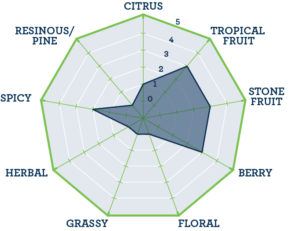
Comet: Bright citrus with lemon and lime notes take center stage, supported by herbal impressions and warm vanilla.
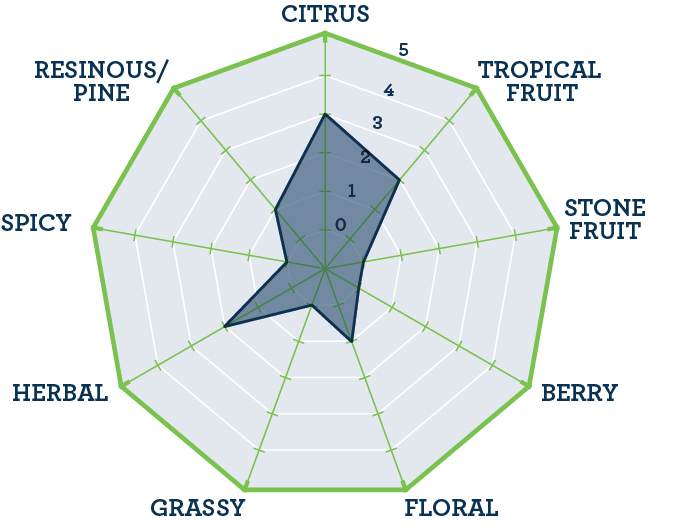
Triumph: Intense and fruity with prominent peach, lime, and orange, followed with suggestions of spice and pine.
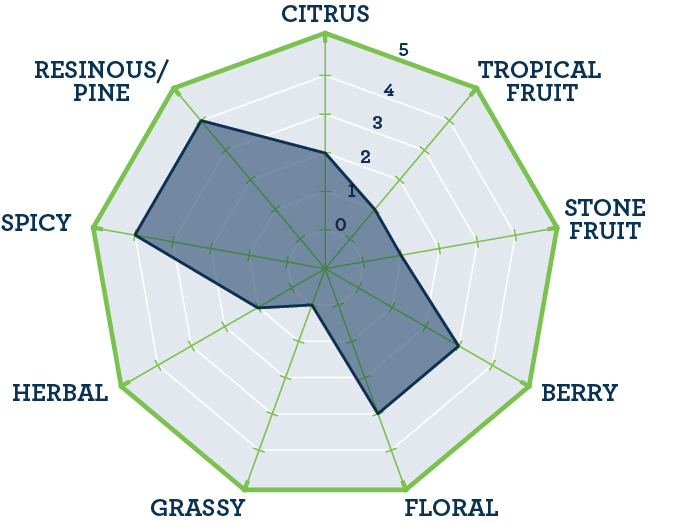
El Dorado®: Tropical fruit, pear, watermelon, and stone fruit notes.
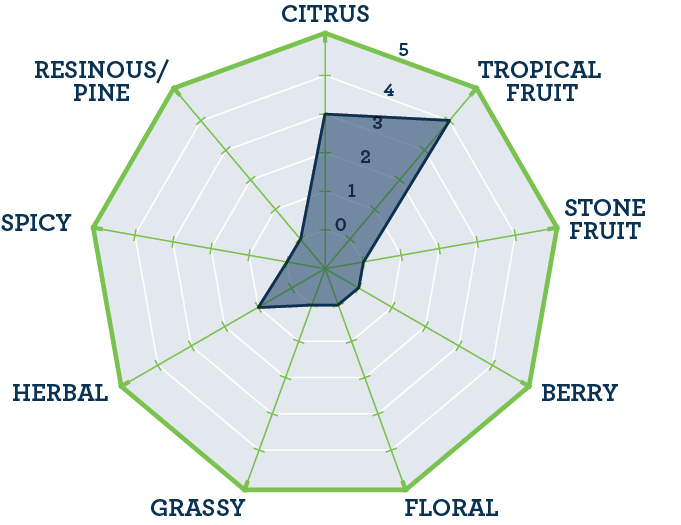
Hops: less is more!
Although dumping box upon box upon box of hops into the whirlpool can make for great social media clout, sometimes less is more. T-45 hop pellets have less vegetative plant matter but a higher concentration of alpha acids and oils – the reduction in wort loss and increase in flavor punch can make a big difference to your yields and revenue at an Imperial IPA scale.
Go deeper: get lupulin rich with T-45 hop pellets
Malt and fermentables
When considering the other ingredients for an Imperial IPA, it’s important to remember that Imperials generally maintain a medium body with a dry or medium-dry finish with golden to a reddish-copper color. A base malt that won’t overshadow or be overshadowed by the hops is key – Rahr 2-Row is an excellent (and eco-friendly!) option.
The use of simple sugars – like dextrose or sucrose – keep the malt character from overriding the hops and help achieve that desirably dry finish. A sugar addition at 10% will ensure complete attenuation and dilute the malt character enough to make an Imperial IPA dangerously drinkable.
Let’s talk hops: https://go.bsgcraft.com/Contact-Us.html